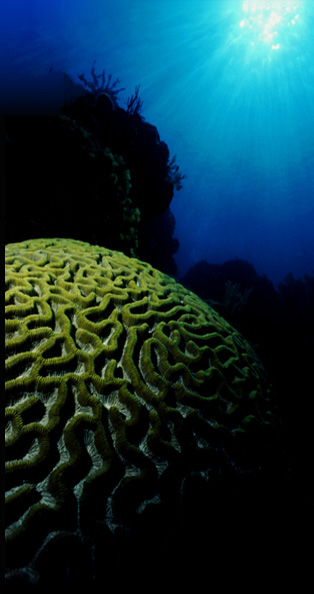|
Underwater Housings: (continued)
maintaining a respectable
distance from shy marine creatures. The drawback to this
effect occurs with the use of wide-angle lenses.
Consider the same situation,
this time with a "standard" 24mm wide-angle lens. The resulting
focal length, after adding in the two magnification factors, turns
the wide-angle into almost a standard 50mm lens!
In the last part of the Digital Photography
Basics section I mentioned that the most useful lens a
photographer can own is a super wide. But in order to take full
advantage of the lens, it must be used in conjunction with a dome
port.
Dome ports also create a second lens over the primary, but in this
case the "curved" water lens acts as wide-angle adapter,
increasing the angle of
coverage thereby maintaining the original focal length.
Dome ports should always be used with wide-angle lenses.
They have four advantage over flat ports.
1. They preserve the original
angle of coverage of wide-angle lens.
2. Dome ports don't vignette
when matched with an appropriate wide-angle lens
(manufacturers create different size dome ports, in conjunction
with extension rings, and list which lens is "idealized" for that
combination). Conversely with a standard port, the
wide-angle lens "sees" the edges of the port.
|
















